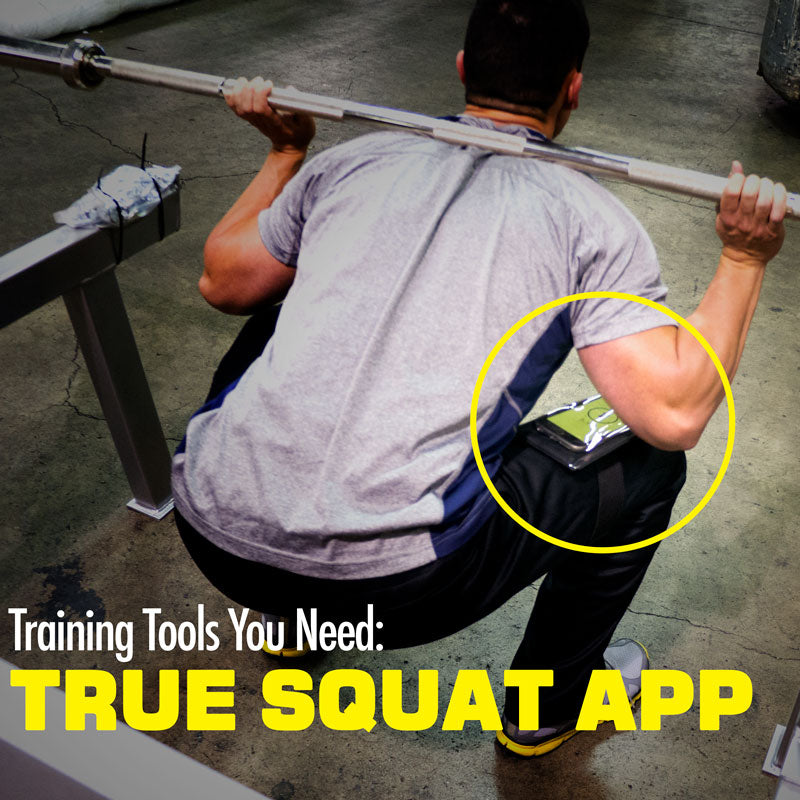Training Tools You Need: The True Squat App

The back squat should be a key exercise in any athletic fitness training program. The standard that BFS has set is parallel depth or slightly below it. However, if an athlete squats three to five inches high, even if they are using nearly double bodyweight, they are not accomplishing much. In fact, such partial movements can result in many problems, including flexibility issues and a high risk of lower back injuries. The question is, how can an athlete be certain they are squatting low enough to get the most benefits from the King of Lifts?
Proper squatting technique offers athletes the best defense against knee injuries and builds the foundation for great speed and jumping ability. In fact, no other exercise works as many major muscle groups as effectively as the squat. To enjoy these benefits, the guiding principle is that it’s necessary to squat so that the tops of the upper thighs are at least horizontal to the floor. Parallel squats work the major muscles of the lower body through a greater range of motion and increases the strength of the bones and connective tissues such as tendons and ligaments. In contrast, doing a quarter lift places excessive compressive forces on the spine and will do little to improve athletic performance or knee stability.
Does BFS have any problem with an athlete squatting lower than parallel? Certainly not, as long as the athlete has the flexibility to do so without rounding their lower back. All we are saying is that an athlete must squat to at least parallel to get the most benefits out of this valuable exercise.
30% OFF SELECT SAFETY AND TRAINING AIDES FROM BFS: CLICK FOR MORE INFO
During our clinics and certifications, we use a simple test to help athletes and coaches determine the proper depth. It’s called the marble test.
If an athlete were to place an imaginary marble (or dowel) on the middle of the top of the thighs during their deepest squat position, which way would the marble roll? If the marble would roll towards the knees, the athlete is not squatting low enough. If the marble would stay stationary or roll towards the lifter’s hips, the depth is good. Using this standard, what you’ll find is that the bottom of the thighs has to be below parallel at the bottom of the squat.

1. The BFS True Squat is designed to be used quickly and intuitively.
Launch the app, then press “Begin.”
2. Simply select the number of reps and the desired angle to be reached.
0º being a true parallel squat.
3. When the device reaches the degree set the lifter is notified
with a bell and vibration.
4. Teaching aids are included under the home screen menu button
and include a comprehensive technique video.
The marble test is an effective way to judge the depth of a squat, and the BFS True Squat App for smartphones duplicates what happens during the marble test. It’s even more accurate to use the True Squat because it’s 100 percent objective. Here’s how it works:
To use the device for the squat the athlete turns on the app on their smart phone, places the device in the case, and then secures the elastic strap around the largest part of one thigh. Then they squat. When the athlete reaches a position where their legs are parallel to the floor, the device will beep and light up – if the squat is too high, they will not hear a beep or see a light. As such, the True Squat provides the coach and athlete instant feedback about the performance of the exercise – if an athlete squats high, True Squat will let them know.
In the BFS system we prefer three spotters. It’s best to squat inside a power rack, with safety pins adjusted to the proper height. Because relatively heavy weights can be used in the squat, it’s essential that proper spotting be used. Although it’s possible to squat safely with one spotter (standing behind the lifter), it’s better to have three spotters (two at the side and one behind). Besides ensuring the safety of the athlete performing the lift, the side spotters can judge spotting depth and technique and can encourage the athlete to break personal records.
With the True Squat, the spotters can focus on their jobs of spotting and offering encouragement without having to assess the depth of each repetition. If the athlete is squatting alone, preferably inside a power rack, they will know whether or not they are performing the lift correctly. Also, this ensures that records made in the squat are accurate – there will not be any questionable “high” lifts passed.
When you think about it, the name True Squat is a bit of a misnomer because the device can also be used to ensure optimal performance on dips and push-ups. The athlete simply straps the device to the back of an upper arm, and when the upper and lower arms form a 45-degree angle, it will beep and light up when the upper arm is at parallel. As such, the True Squat can be valuable in physical fitness classes for testing purposes.
The True Squat App ensures the highest, objective standards of testing and training on several core strength training exercises. It should be an essential tool in every athletic fitness training program.
